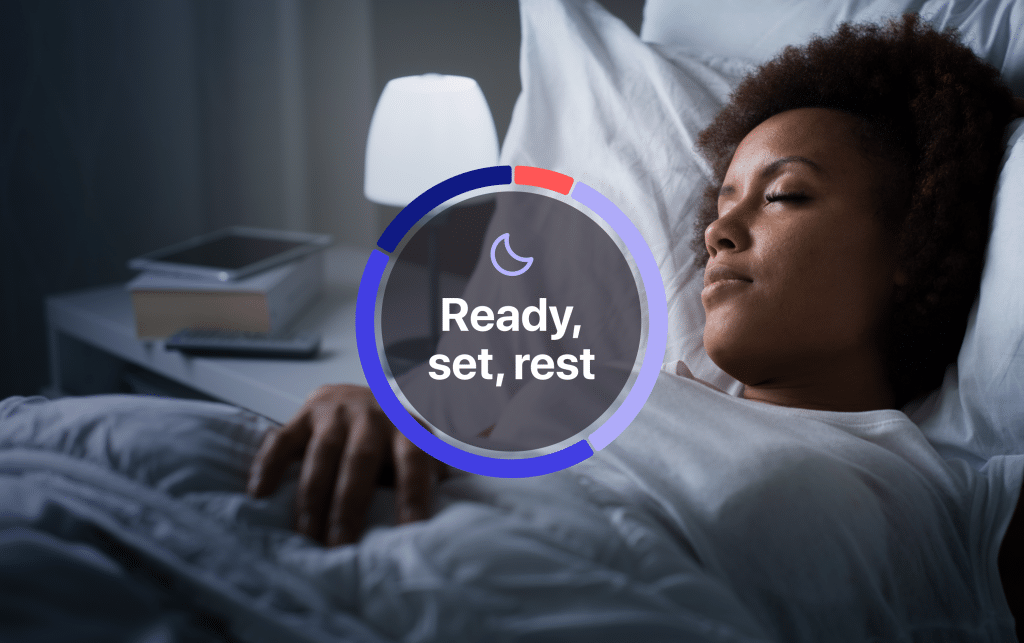Regular physical activity is vital for anyone trying to lose or maintain a healthy weight.
You can do many things that burn body fat, create a calorie deficit, and help you get in shape. The real question is: Which cardiovascular exercise is best for weight loss?
Swimming, cycling, and running are all excellent workouts if you do them consistently. But if you enjoy running you’re in luck, running can be a great way to burn calories and promote weight loss. Compared to these other forms of exercise, one study shows that running burns more calories per mile, because it takes more time to run a mile rather than biking.
If you’re starting your journey to better health and are considering running for weight loss, this guide will provide seven easy tips that will have you up and running (pun intended) before you know it.
Can You Lose Weight and Belly Fat by Running?
Yes, you can.
But note that it’s impossible to specifically go running to lose belly fat because that’s not how exercise works. You can do crunches all day to strengthen your abdomen, but the only way to shrink your belly is by losing overall body fat, and running is a terrific option.
Of course, going for a run isn’t the only effective way to lose weight. For example, this 20-minute high-intensity interval training can help torch calories even faster.
But if you prefer less intense exercise levels, running is a great way to go.

What does science have to say?
A decade ago, the Lawrence Berkeley National Laboratory released a study showing the positive correlation between running and weight loss. More recently, a Czech study of over 1,000 adult runners confirmed earlier findings, concluding that a regular running workout to lose weight improves physical fitness. It does this by significantly reducing body fat under the skin as well as around your organs.
Translation: Jogging for weight loss works.
So, if you’re a beginner determined to lose weight running, keep reading to learn how to start racking up the miles and shedding pounds in no time.
6 Easy Tips for Running To Lose Weight
When you’re focused on a long-term goal, the little details matter. Use these strategies to get the most out of your runs.
1. Consider the different types of running and their benefits
Not all runs are created equal. So before you lace up, it’s good to know about the different types, their benefits, and which are best for beginners running for weight loss.
- Jogging: At an average pace of 4 mph to 6 mph, jogs are easy on the joints and cardiovascular system, making them perfect for beginners starting a new routine.
- Running: Beyond 6 mph, you’re officially running! If you’re a beginner, it may take a few months to progress from jogging to running, but with consistency, everyone gets there. Since running gets the heart going faster than jogging, it’s also more effective for weight loss.
- Interval sprinting: Sprinting between intervals of jogging or running is a more intense workout that burns calories faster. Although runners at any level can benefit from interval sprinting, beginners should ease into it, keeping the frequency of these workouts to no more than three days per week.
- Long-distance running: Running a longer distance for a longer period of time can lead to more calories burned (a single run of 10 or more miles can burn 1,000 calories). However, it’s vital that beginners slowly build up to a long-distance exercise program so their bodies can adjust.
- Outside vs. the treadmill: Depending on preference, you can do any of the above runs outside or on a treadmill. Treadmills allow for a more controlled environment to monitor your pace and distance but can make for a duller exercise. On the other hand, running outside provides lots of visual stimulation, but keeping your pace consistent is more challenging.
2. Eat a healthy diet to support this form of exercise
Some new runners are so focused on losing weight that they make critical fueling mistakes — such as not eating enough carbs — that can impede their long-term goals.
That’s why one of the best ways to lose weight from running is to combine it with a diet that supports physical activity.
- Find the ideal pre-workout meal: Before your run, choose a light snack that balances carbohydrates and protein, such as a banana with peanut butter or a small portion of oatmeal. At the same time, avoid unnecessary discomfort by not eating anything high in fat or fiber, such as fried foods, red meat, beans, or berries.
- Learn what and when to eat after your workout: Post-run nutrition is just as important. You don’t want to eat more calories than you’ve just burned, but you need to replenish your muscles with protein and carbohydrates to refill energy and promote recovery.
- Plan your meal timing right: Eating 60 to 90 minutes after a workout is when the body is most effective at replacing carbohydrates and promoting muscle growth and repair. Low-sugar smoothies with fruit and whey protein or this zucchini hummus chicken wrap are two great choices.
3. Start slow until you reach runner’s high
If you’ve never run before or aren’t used to regular exercise, it’s normal to be intimidated at first.
The good news is you don’t have to start with running. First-timers can begin by simply walking every day. For some people, a half-hour walk may even burn more fat than a thirty minute workout.
Starting slow has the added benefits of being more enjoyable and sustainable while minimizing the risk of injury. As you get more comfortable and your body adjusts to the new exercise routine, you can slowly progress from walking to running.
Once you’re running on a regular basis, there’s something else to look forward to.
You’ve probably heard of the euphoric experience during long runs caused by the brain releasing endorphins and neurochemicals. Good news: Runner’s high is a real thing.
Although you aren’t likely to hit a “runner’s high” as a beginner, it’s something to look forward to as you slowly build up the pace, frequency, and distance of your runs.
Fun fact: 5,720 workouts are tracked per minute in the MyFitnessPal app.
4. Make sure you stay hydrated
Every runner needs to stay hydrated, but it’s crucial for beginners demanding more from their bodies.
Hydration provides energy, improves performance, affects mood and breathing, and may even increase your metabolic rate. The risks associated with dehydration range from minor headaches and cramping to severe complications such as heart disease and heat stroke. Apps like MyFitnessPal are incredibly useful for beginners since they help you track your hydration throughout the day.
5. Create a running plan and stick to it
Going for a run is a great workout, but you’re unlikely to see any changes in your current weight without consistency.
One way to keep yourself on track is to create a running schedule to lose weight. Whether you start with one or two runs per week or choose a more frequent routine, staying disciplined will help your body adjust faster.
Regardless of your weight loss running plan, stick to your schedule and be consistent in order to make the most of your running for long-term improvement. With MyFitnessPal, you can factor the calories you lose during a run into your daily caloric goals, giving you an extra boost of motivation to get out there and hit the pavement.
6. Complement physical activity with diet
Yes, we mentioned it, but it’s worth repeating the importance of a balanced, nutritious diet to complement physical activity.
Some people are so excited to see results when they start running that they try to accelerate their weight loss by eating less. Methods such as yo-yo dieting aren’t sustainable and can have a negative impact, including regaining all the weight lost running.
7. Remember to get adequate sleep
Finally, getting enough sleep each night is a health benefit that directly impacts weight loss by regulating metabolism and appetite, improving running endurance, and keeping hunger hormones in check. With sleep features, MyFitnessPal can also provide invaluable insights about your sleep patterns, helping you optimize your sleep by identifying foods inhibiting sleep.

Reach Your Weight Loss Goals With MyFitnessPal
Although running can help you reach your goals, weight loss isn’t a trip around the block.
A run/walk program is fantastic for jump-starting your journey, but keeping the weight off long-term requires consistency and a diet that accounts for caloric intake.
That’s where MyFitnessPal can help. With the right tools and resources, you can overcome past hurdles, take the mystery out of weight loss, and help achieve your fitness goals once and for all.
Create a free account to get started and lace up with millions of others running for weight loss, fitness, and fulfillment.
